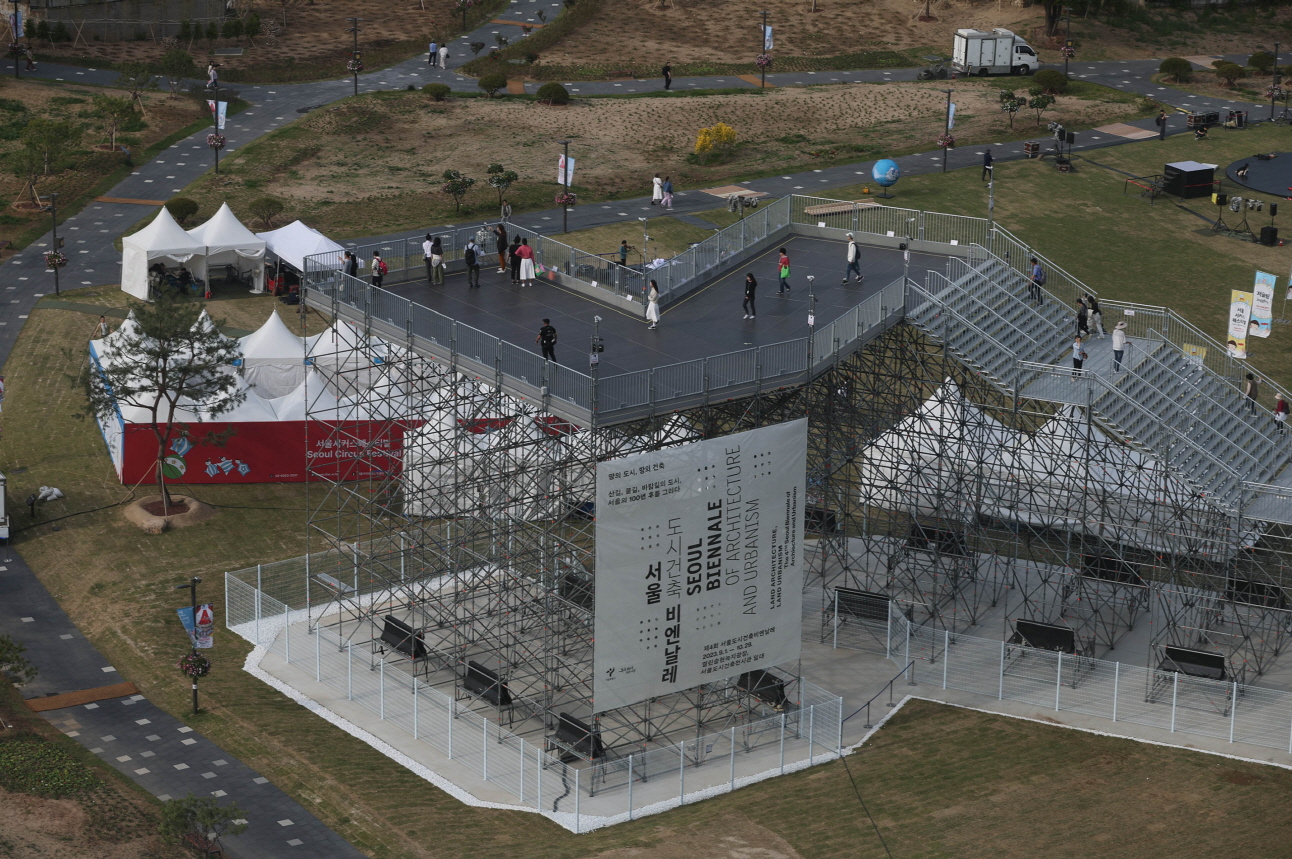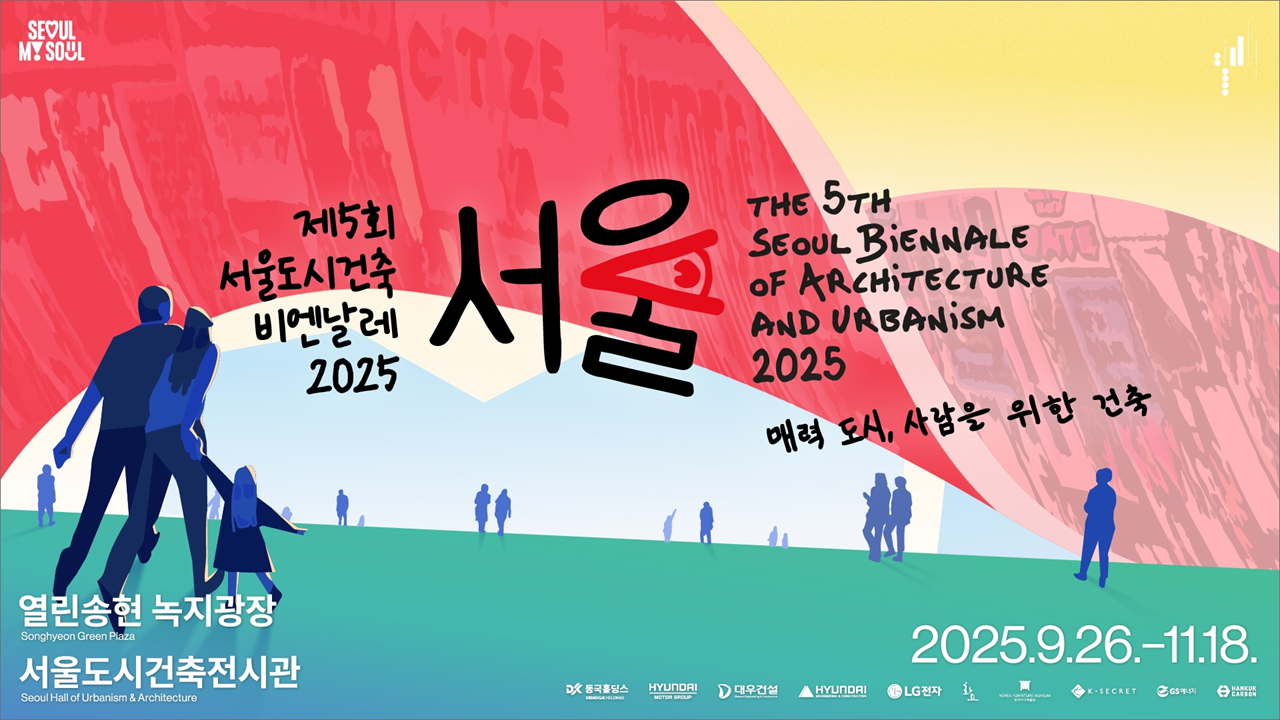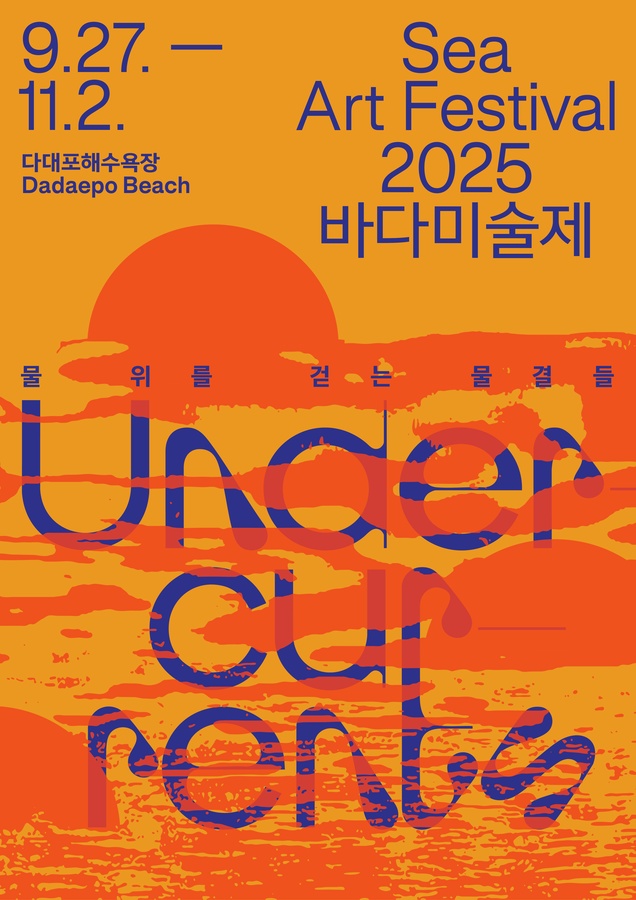In the second half of 2023, the Korean art scene is expected to become vibrant with various events. Notably, the country’s most significant art market will return to COEX. Frieze Seoul and Kiaf SEOUL, which created a buzz in the art scene when they were first held last year, will open their second joint art fair this year, starting on September 6 through September 10.
However, it is not just the art market that is bustling. While the Gwangju Biennale and Busan Biennale are among the most renowned events representing Korea, there are numerous distinctive biennales that focus intensively on various mediums and themes.
In the latter half of this year, the Seoul Biennale of Architecture and Urbanism will reinterpret Seoul through the themes of urbanity and architecture.
 Installation view of the Sky Pavilion at the public urban green space in Songhyeon-dong, Seoul. Photo by Lee Choong-woo. ⓒ Maeil Business Newspaper.
Installation view of the Sky Pavilion at the public urban green space in Songhyeon-dong, Seoul. Photo by Lee Choong-woo. ⓒ Maeil Business Newspaper.If you are curious about the city of Seoul and have an interest in urban architecture, why not visit the Seoul Biennale of Architecture and Urbanism?
The theme of the 4th Seoul Biennale of Architecture and Urbanism to be held is Land Architecture, Land Urbanism: City of mountain ranges, waterways, and wind breezes: drawing of Seoul’s Next 100 years. The exhibition is overseen by BCHO Partners’ representative architect, Byoungsoo Cho, and takes place in the vicinity of Songhyeon-dong and the Seoul Biennale of Architecture and Urbanism Exhibition Hall.
Initiated in 2017, the Seoul Biennale of Architecture and Urbanism addresses various issues related to rapidly growing cities. Its pri
mary goal is to examine global urban issues through Seoul, a densely populated city, and explore diverse alternatives.
This year’s focus is on presenting a master plan to transform Seoul into an eco-friendly city, taking into consideration its natural and topographical features as a high-density urban area. The exhibition aims to showcase the potential and significance of Seoul as a future city. It comprises five parts: the Thematic Exhibition, the Seoul 100-Year Masterplan Exhibition, the Guest Cities Exhibition, Global Studios, and On-site Projects.
A particular highlight of the event is the installation of a 12-meter-tall Sky Pavilion at the public urban green space in Songhyeon-dong. The Sky Pavilion signifies a meeting place with the sky, allowing observers to appreciate the mountainous terrain and topography of Seoul’s surrounding areas, including the Bukhansan and Inwangsan Mountains, from various angles. Additionally, the structure emphasizes the connection between nature and the city of Seoul, inviting visitors to climb its stairs and experience the elements of mountains, rivers, wind, and light.

























